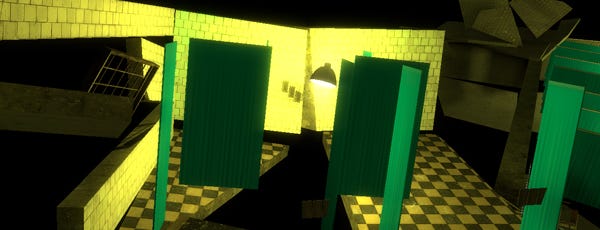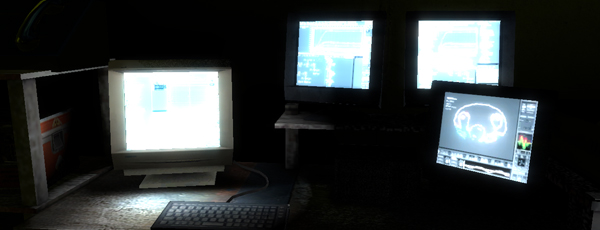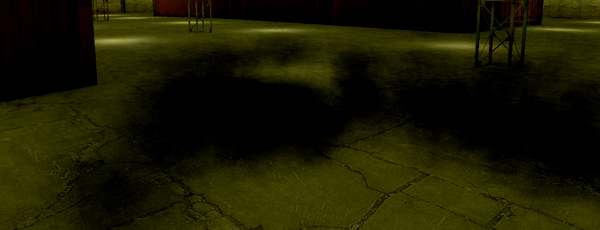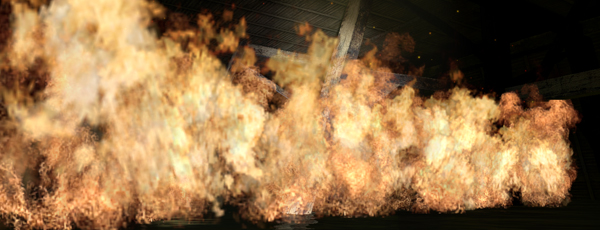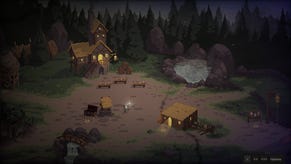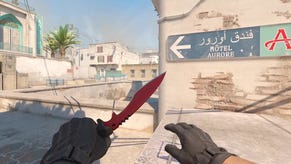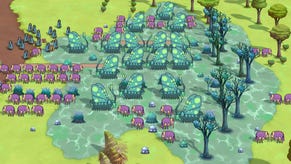An Esther Binge: Korsakovia
[Everyone seemed to like what Master Lewis Denby wrote about Dear Esther last time. So when the mod-team behind it release a new project, we thought we'd better set him forth to examine it. And this is his report...]
In a sentence: it's just really messed up.
Which is to be kind of expected from The Chinese Room. This is the team of researchers at Portsmouth University, investigating new ways in which the first-person perspective can be used to generate different responses from the player. Their last experiment was Dear Esther, which I think I've probably said enough about already. Korsakovia's their new mod, again for Half-Life 2 (though Episode 2's required to play this one), and can be found here.
The change in atmosphere is the most immediately striking difference. Both are very much mood pieces, but where Esther excelled through its slow, contemplative wandering, Korsakovia is twitchy and stifling. It's all about panic. The research mandate this time was to see how players respond to a nightmarish situation with minimal narrative cues, in a world where none of the antagonists resemble anything usually portrayed in a computer game. The answer, for me at least, is that you run a mile.
Korsakovia places you in the boots of Christopher, a sufferer of the rare Korsakoff's syndrome, in a psychiatric hospital. I've been doing a little reading into Korsakoff's and, well, it sounds bloody horrible. It's a deep state of psychosis in which sufferers are unable to form new memories and struggle to determine between reality and fantasy. Which is an absolutely terrific premise for a horror game. So Korsakovia plays with the idea that you're never quite sure what's actually going on, and what's happened before. The end of the world is repeatedly referenced, and the game's narrated by a sequence of conversations between Christopher and his doctor. But they're fragmented, broken by static, and often don't make a lot of sense. They're also brutally chilling. One of the first things we discover is that the hospital's medical staff suspect Christopher may have ingested his own eyes.
Those who fell foul of Esther's meandering, abstract storytelling might struggle with Korsakovia's as well. There's a much stronger thread running through the middle of it, and the narration isn't randomised this time, but as far as actually being able to form it into something cohesive, I'd say there's an even bigger challenge here. Yet it makes more sense. Where Esther held a great deal of information back, Korsakovia gives you exactly as much information as Christopher has. Did you really eat your eyes? Is the world really ending? Are these streams of black fog really out to get you? Christopher doesn't know, so nor do you.
The black fog's a highlight. This is The Chinese Room's removal of anthropomorphic cues from the antagonist. Your enemy here is a collective of streaming, screaming plumes of vapour that regularly do their best to overwhelm. There's a crowbar, but much of the game is played without it, so there's a hell of a lot of running away to be done. But these smoke monsters - actually a lot like the one in LOST - are abominably fast, and the second one spots you, it charges from wherever it was, swallowing you up in an instant.
Oh yeah: it's much more of a game than Esther. With a crowbar - Half-Life 2's original one, disappointingly - and a persistent enemy threat, it's very much what we'd think of as a horror-based FPS. Only, you know, a lot stranger. It's here that Korsakovia both succeeds and fails. Clearly, those who hated Esther's lack of interaction are going to be a lot happier here. For me, though, there's almost too much of it. The world is tremendously creative, the narration deeply fascinating to absorb. When you're being chased by half a dozen sentient particle effects, it's often a little difficult to take in.
Indeed, as an overall piece, I find myself less impressed than I was with Dear Esther. I still like it a lot, and huge swathes of it are enormously interesting. But there are problems. I was surprised to discover Korsakovia cost over ten grand to produce, which must be pretty much unprecedented in the mod scene. For that cost - and okay, I'm sure a lot will have gone on the research side of it, and paying the team as full-time developers - I'd say you'd be forgiven for expecting a little more polish. Some of the level design is a little obtuse, the signposting particularly bad in a couple of places (though I know one section will have received a quick overhaul in time for release). The final sections rely too much on precision jumping for my liking - though parts of both Half-Lives did too, and it never held them back from greatness. The engine staggers from time to time, apparently a consequence of the huge amount of entities placed around the world. And that world isn't exactly lavish. The Chinese Room's previous work suffered from the odd case of visual blandness, but here it's a bit more of a problem, chopping away at the atmosphere a little too much.
That's a shame, because at times the creative direction is absolutely phenomenal. I'll tread carefully to avoid spoilers here, since much of Korsakovia's wonder comes from turning a corner and coming face-to-face with, well, that. Frequently, it's really, eerily weird. I read an interview recently with lead designer Dan Pinchbeck, in which he said the team were "trying to see how much we can fuck with you," and it resonates when you actually play the game. There are regular repulsive sights. A lengthy section in the middle made me feel physically unwell, thanks to some breathtaking, dizzying architecture. And the audio... well.
Jessica Curry's a real star. She was responsible for the elegant and evocative piano motifs in Dear Esther, and takes full sound design control here. From the fusion of musical styles, to the alarming bumps and thumps, and particularly the utterly alien sound of the smoke monsters, it's an absolute aural feast. That is, a particularly poisonous one that ravages your insides. The whole mod sounds unthinkably horrendous, in the most brilliant way you could ever imagine.
It probably helps to consider Korsakovia in the context within which it was created. How do you respond to the lack of a structured story? How far can designers push the boundaries of art design? How necessary are recognisable antagonists? It's interesting to see what theories you come up with about what's going on, which bits are real and which are imagined, and what the purpose of these omnipresent smoke creatures is. Again, there's an absolute truckload of quirky symbolism. Fire, electricity, television and - oddly - furniture all feature heavily. But it's less integral than in Esther: it's thematic stuff that you can happily float on by without it really affecting the experience. And that's the key to Korsakovia. You don't have to be interested in the peripheral stuff, because there's actually a fairly meaty game to become absorbed in as well.
Pinchbeck has always said he doesn't want his mods to become pure experiments. He wants them to be enjoyable user experiences that also inform us of how games work, and how players engage with them. In this sense, Korsakovia totally succeeds, and that's why it's such an enormously exciting project.
Korsakovia is available to download here.
